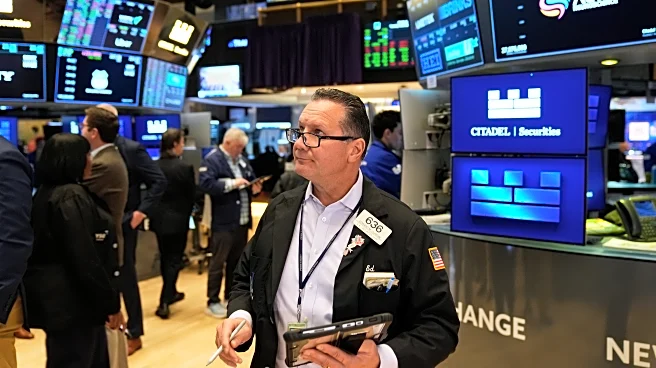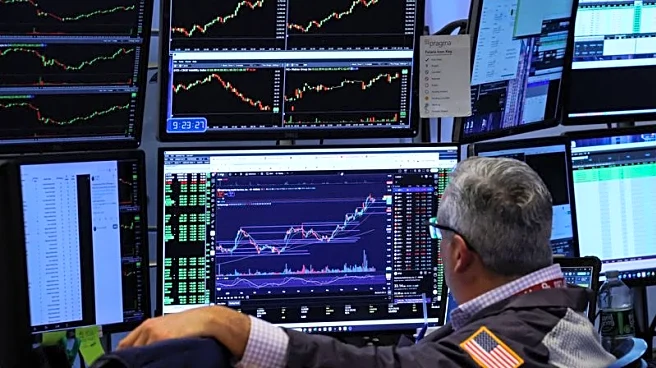What's Happening?
Wells Fargo has reached a new intraday high of $88.64 on November 12, 2025, following the Federal Reserve's decision to lift the bank's asset cap in June. This removal has allowed Wells Fargo to expand
its balance sheet and focus on higher-return businesses. The bank's management has been actively pursuing efficiency, with CEO Charlie Scharf indicating potential headcount reductions through attrition. Wells Fargo's recent performance includes beating Q3 estimates and raising its medium-term return on tangible common equity target to 17%-18%. The bank is also preparing for its 9th Annual TMT Summit and upcoming earnings release in January 2026.
Why It's Important?
The lifting of Wells Fargo's asset cap marks a significant shift in the bank's operational capabilities, allowing it to pursue growth strategies that were previously constrained. This development is crucial for investors as it signals potential for increased profitability and market share expansion. The bank's focus on efficiency and cost discipline, including the use of AI, highlights its commitment to improving operational performance. The broader implications for the financial sector include potential shifts in competitive dynamics as Wells Fargo leverages its newfound flexibility to enhance its market position.
What's Next?
Wells Fargo is set to host its 9th Annual TMT Summit, providing a platform for investor engagement and strategic discussions. The bank's participation in the Goldman Sachs Financial Services Conference in December will further allow it to update the market on its progress. Investors will be closely monitoring the bank's ability to convert operational flexibility into sustainable fee growth and market share gains, with the January earnings release serving as a key checkpoint.
Beyond the Headlines
The removal of the asset cap not only impacts Wells Fargo's immediate financial strategies but also reflects broader regulatory shifts in the banking industry. This change underscores the importance of governance and risk management improvements, which could influence future regulatory decisions for other financial institutions. Additionally, Wells Fargo's emphasis on AI and automation may set a precedent for technological integration in banking operations, potentially reshaping workforce dynamics and efficiency standards across the sector.













